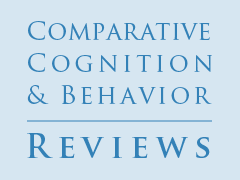Cerebral and behavioural asymmetries in animal social recognition
by Orsola Rosa Salva,
University of Trento, Italy
Lucia Regolin,
University of Padova, Italy
Elena Mascalzoni,
University of Padova, Italy
Giorgio Vallortigara,
University of Trento, Italy
Reading Options:
Download/Read PDF | Add to Endnote
Abstract
Evidence is here summarized that animal species belonging to distant taxa show forms of social recognition, a sophisticated cognitive ability adaptive in most social interactions. The paper then proceeds to review evidence of functional lateralization for this cognitive ability. The main focus of this review is evidence obtained in domestic chickens, the animal model employed in the authors’ laboratories, but we also discuss comparisons with data from species ranging from fishes, amphibians and reptiles, to other birds and mammals. A consistent pattern emerges, pointing toward a right hemisphere dominance, in particular for discrimination of social companions and individual (or familiarity-based) recognition, whereas the left hemisphere could be specialized for “category-based” distinctions (e.g., conspecifics versus heterospecifics). This pattern of results is discussed in relation to a more general specialization and processing styles of the two sides of the brain, with the right hemisphere predisposed for developing a detailed, global and contextual representation of objects, and the left hemisphere predisposed for rapid assignment of a stimulus to a category, for processing releaser stimuli and for control of responses.
Keywords: social recognition, individual recognition, lateralization, comparative studies
Salva, O.R., Regolin, L., Mascalzoni, E., & Vallortigara, G. (2012). Cerebral and behavioural asymmetries in animal social recognition. Comparative Cognition & Behavior Reviews, 7, 110-138. Retrieved from http://comparative-cognition-and-behavior-reviews.org/ doi:10.3819/ccbr.2012.70006
